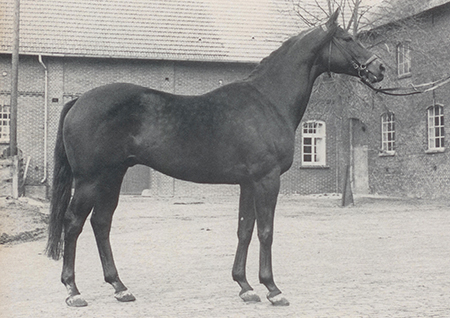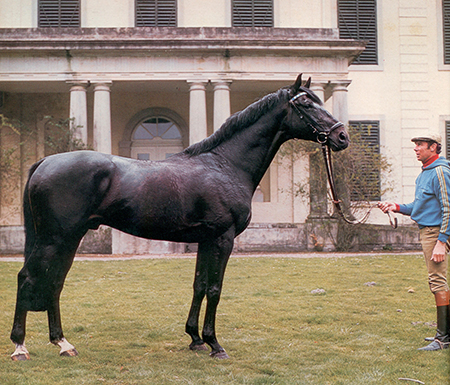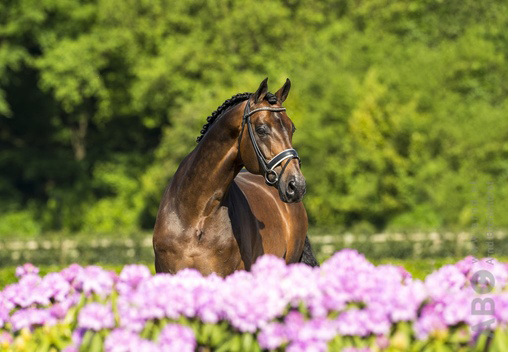
One of the more successful dressage stallions of modern times, Romanov has died as a result of the effects of Cushings Disease.
He was the product of Harli Seifert’s breeding program which produced top jumpers and top dressage horses – most notably her series of five licensed full brothers, starting with Rubin-Royal, who went on to compete Grand Prix and emerge as a successful sire. Four years later, Romanov was born. He too was to become a Grand Prix star and a sire.
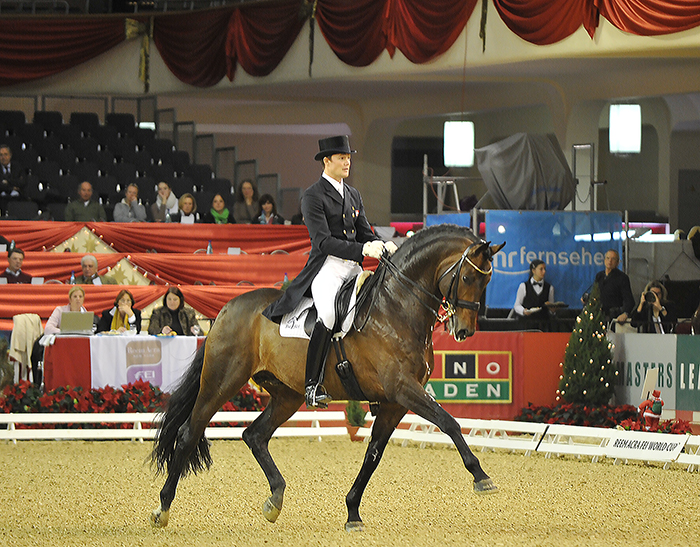
Sune Hansen and Romanov at Frankfurt in 2010
Romanov was the reserve licensing champion at the 2002 Oldenburg stallion licensed and sold to Blue Hors stud. Andreas Helgstrand competed in as a young horse, and then Sune Hansen took over the ride and took him to FEI level.
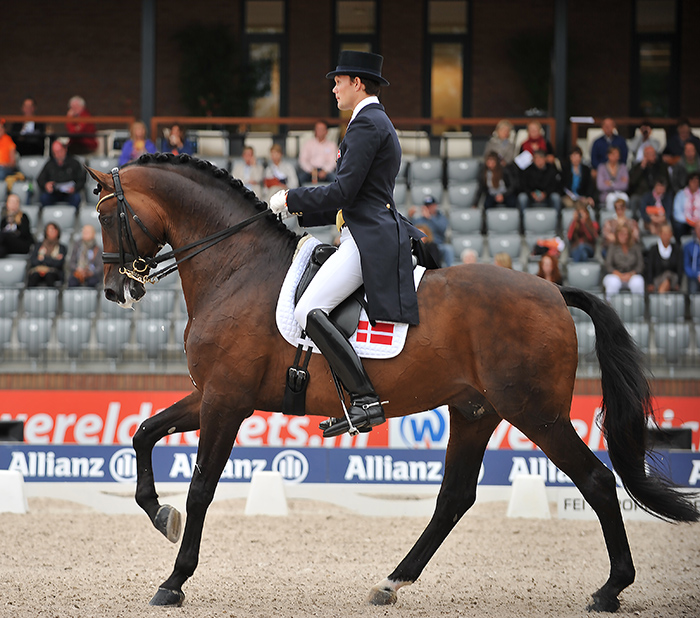
They were in the Danish Team at the 2011 European Dressage Championships in Rotterdam.
At the end of 2011 Blue Hors sent the stallion to The Netherlands to be ridden by Edward Gal as his 2012 Olympic hope. In 2012 they competed in four major shows: CDI-W ‘s Hertogenbosch, CDI Munich CDI Rotterdam, the Dutch Championships in Hoofddorp and CDI-W Odense, but were not selected on the team.
At the beginning of 2013 the stallion was sold to Gaston Glock and as Glock’s Romanov, competed with Edward at the CDI Amsterdam before the ride was given to Hans Peter Minderhoud.
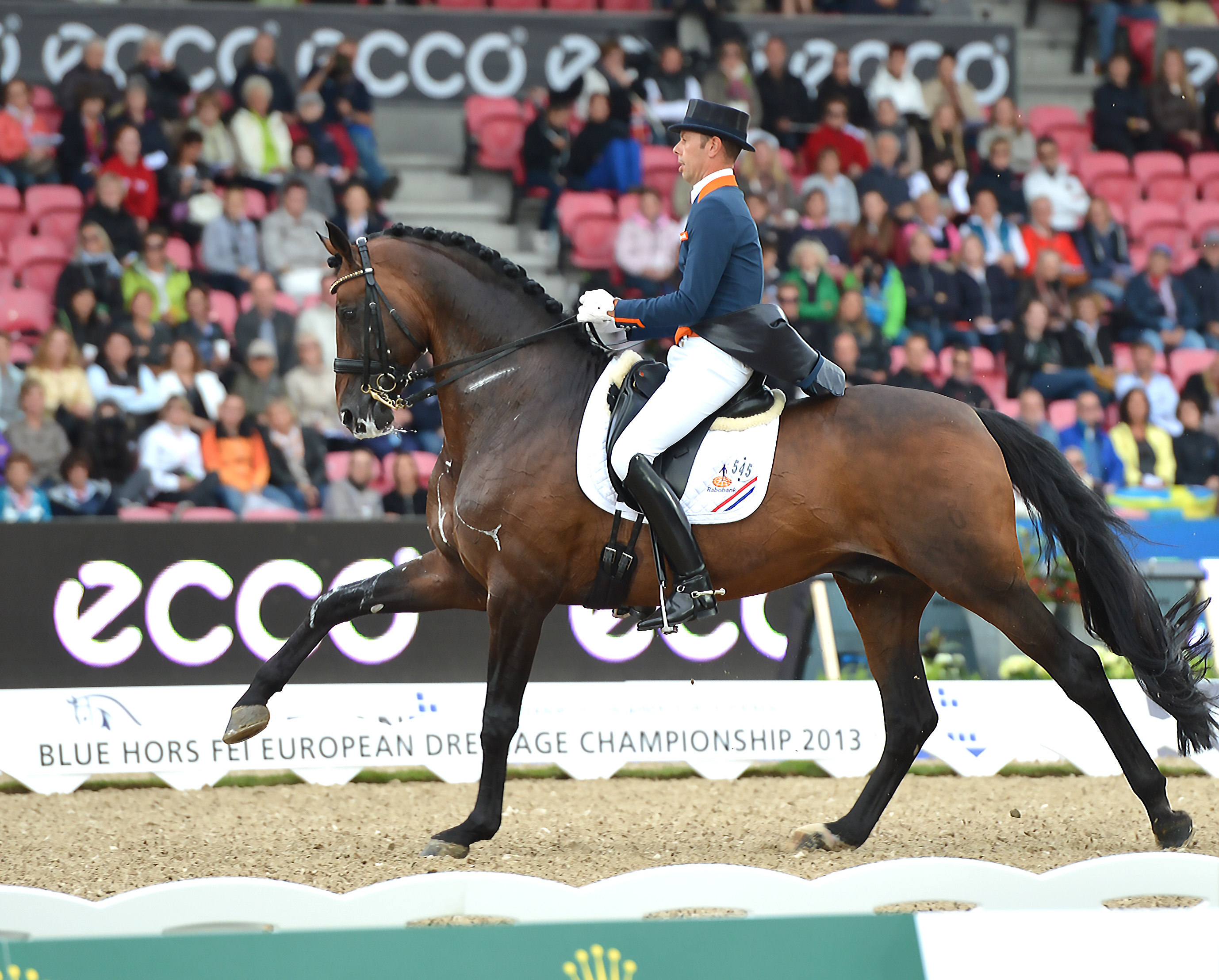
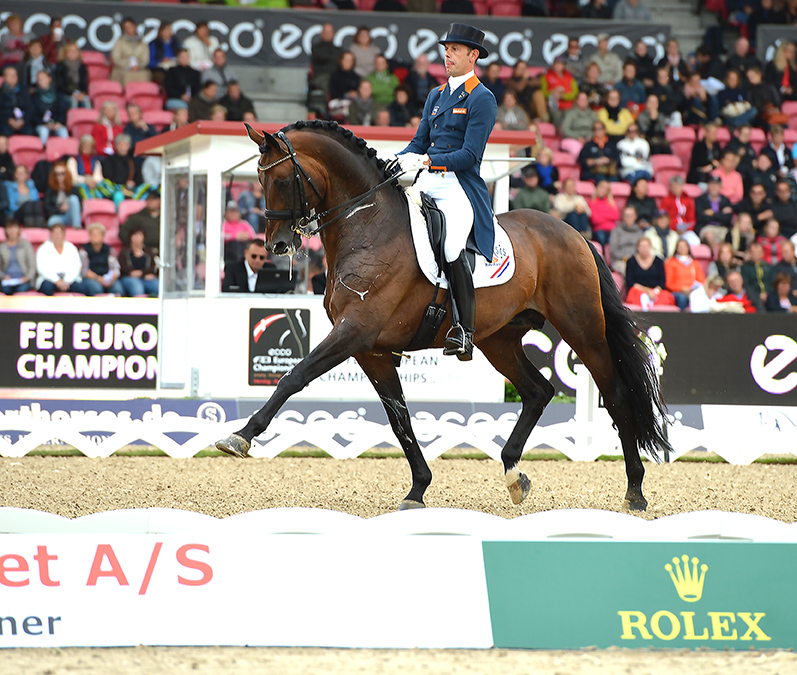
Hans Peter and Romanov represented The Netherlands at the 2013 European Championships in Herning, where they were 13th in the Special.
Romanov competed in his last CDI in Drachten in January 2016. Romanov’s breeding career ended in 2019 when he was retired from stud duties.
In the latest – hot off the press – 2020 edition of the Hanoverian stallion book, Romanov is recorded with personal winnings of €27,995, with 134 progeny winning a total of €73,694, with 109 dressage competitors, 16 at S level. Romy del Sol is the only one to have won more than €10,000 – €13,926.
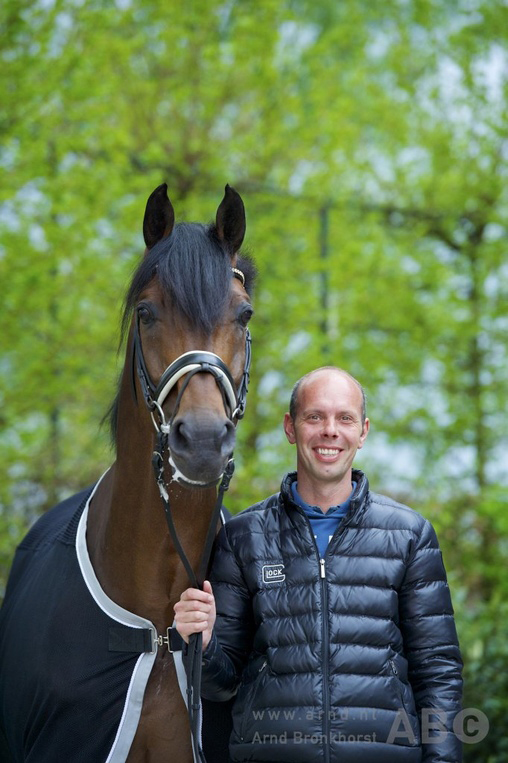
He has a German FN breeding value of 131 for young horse classes, 141 for competition horses, and 177 for the new FN value ‘Höchste erreichte Klasse’ which apparently translates as Highest Level Achieved, though I am not entirely sure what that means…
Romanov has a Hanoverian value of 113 for type, 114 for limbs, 116 for dressage and 89 for jumping.
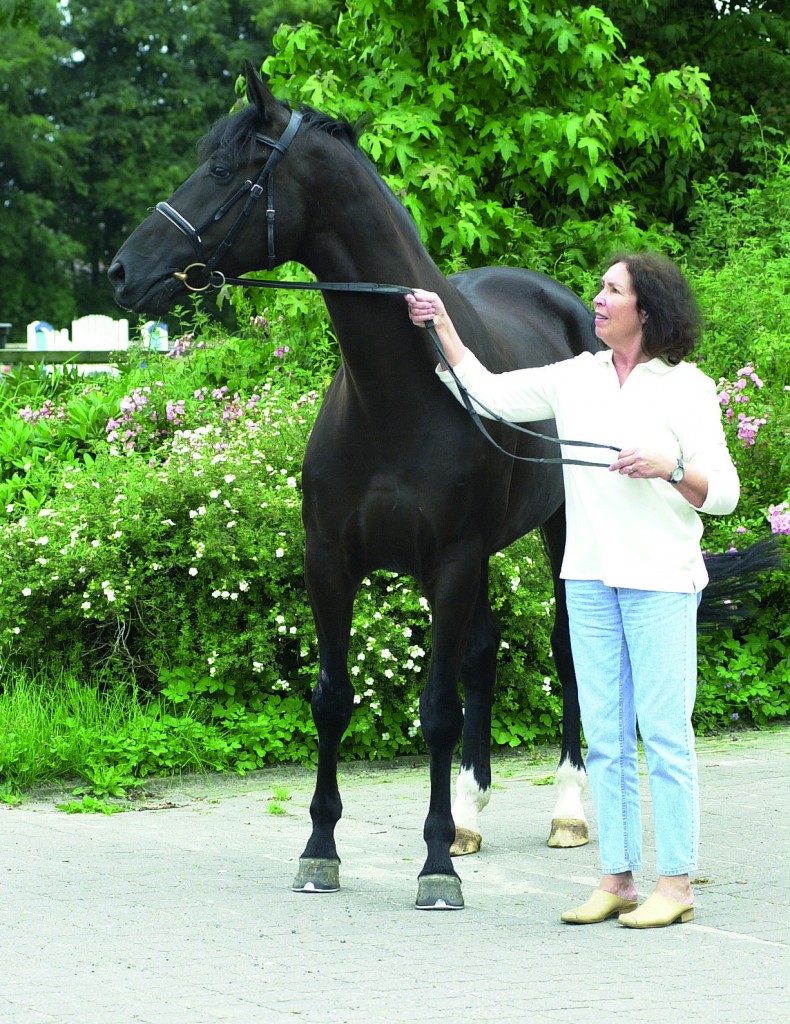
Harli Seifert – Pioneer
Romanov was born right in the heart of Oldenburg, Germany, at the stud farm of Harli Seifert. Sadly Harli Seifert’s breeding operation, like so many of the famous Oldenburg studs, was closed some years ago, but when I visited her in 2002, she had 100 horses on her two properties. A mare breeding farm where she lived, and just a couple of hundred metres down the road, the stallion barn and training stables.
Once again we find a stud that originates with one mare – this time an eventer: Chica. This very important individual was ridden by the owner of the farm, Harli Seifert, and then went to Wolfgang Mengers who competed her at Advanced level eventing, taking the title three years running for Oldenburg’s best eventing horse.
As a breeding mare, Chica (who on pedigrees appears as Rudilore 2 just to keep things confusing) founded three lines, two of which were found on Mrs Seifert’s stud where they formed the backbone of her breeding operation. Both these foundation mares were by Volturno, himself a member of the German Eventing Team.
Volkorn, one of the Thoroughbreds that re-made the Oldenburg horse…
And his son, star eventer, and sire, Volturno with his trainer and breeder Otto Ammermann
Volturno was just one of a number of successful competition horses by the Thoroughbred stallion, Volkorn xx. In dressage, there was Ann-Kathrin Linsenhoff’s Vallauris and H. D. Wolff’s Vago. Volkorn was by Neckar who also sired Waimannsdank.
Volturno was the sire of the dams or grand dams of three Oldenburg Champion stallions, Lord Kemm, Gervantus and Glorieux.
One mare out of Chica proceeded to establish a dressage line, while another produced foals that could jump, with both lines producing performers of the highest quality. Harli Seifert was presented with a gold medal for breeding success, based on the competition career of Gio-Granno with Franke Sloothaak. Gio-Granno stood for Paul Schockemöhle, and is by Grannus out of Rumina by Ramino, out of Chica’s ‘jumping’ daughter, Voilà.
Harli Seifert was the first horse breeder in her family. It was a private passion, that saw her start out in 1978 breeding her two stem mares by sending Chica to Volturno – a great performer, but by a Thoroughbred stallion and therefore a little ‘dodgy’ back then when half bloods were not trusted as breeding stallions.
“It was not easy,” she recalled in an interview I conducted then, “everyone agreed that Volturno was a very good sport horse but there was some question as to whether he was really a breeding stallion. Neither of my two foals received a premium, the Breeding Director at the time said they were ‘not my type’ but I went my own way with my own head, and success has proven me right.”
Certainly looking at the twenty or so mares that made up Ms Seifert’s personal mare band, you could see the wisdom of her breeding policy. These were horses that were modern before ‘modern’ existed – elegant, breedy ladies.
And was it difficult as a woman to be taken seriously as a horse breeder?
“Of course it was not easy at first, and even now there is only one woman to fifty or sixty men, but if you have success and produce good foals, then you can do it. It is not easy getting manpower for the stud. It is not easy to get good riders for the sport – but you must do it because it is the modern way to use stallions in both sport and breeding.”
How do you choose the stallions you send your mares to?
“It depends, with Contender the main point was performance, while the main point with Rohdiamant was type. The stallion has to fit the mare, so with the mother of Royal Rubin, she was a big framed mare so I thought she would be alright with Rohdiamant. You must choose the stallions with feeling, that is what breeding is, feeling. Two and two is not always four – sometimes it is three and sometimes it is five, and when you get five, that is the result of luck and instinct.”
“When I see a stallion like Akzent II or Rohdiamant, then I know that is the stallion for my mare. It is instant recognition. I don’t listen to the ‘experts’, it is my mare, and I will try her with that stallion. Breeding is not mathematics.”
“I feel I have a very great responsibility to the horses and I want to do everything for them myself. Today my breeding operation is so big that it is not possible to do everything, so unfortunately I have to get other people work for me. It is a problem, when I go to the riding stable and see them work the horses so hard without enough feeling.”
“I love going back to my mares at my home. That’s the greatest good fortune and when we wean the foals that is the most terrible day of the year for me because they leave my home and go to the riding stable.”
“I have very high principles to live up to with the horses. I get up every day early, always I feed at the same time – that is the most important principle, everything is done with a plan – every day has to be the same, it must be the same.”
“The moment we come to the pasture all the horses want to come to me, and that is my greatest good fortune. It is important that the horses know that I am good to them every time.”
Romanov descends from the dressage daughter, Ruling Chica, Rumirell, with the addition of that great shaper of good types, Akzent II, and the influential dressage stallion, Grundstein II. Unlike his dad who is on the distinctly small side, Romanov at 173 cms was a big imposing horse with brilliant movement.
What is Cushings Disease? Go to : https://m.facebook.com/kohnkesown/posts/1349844871770020

